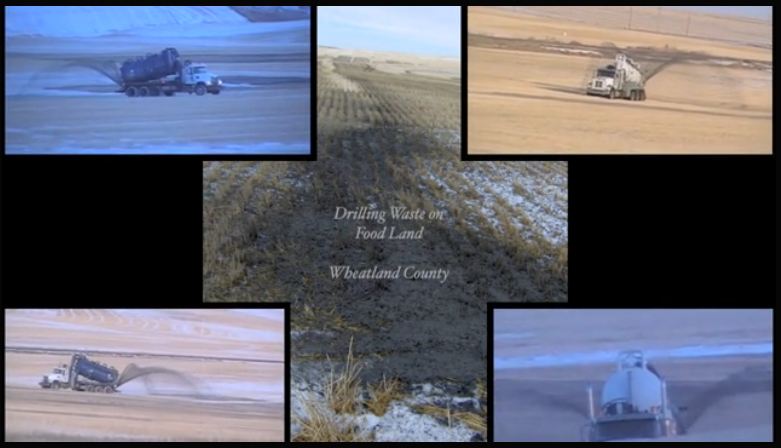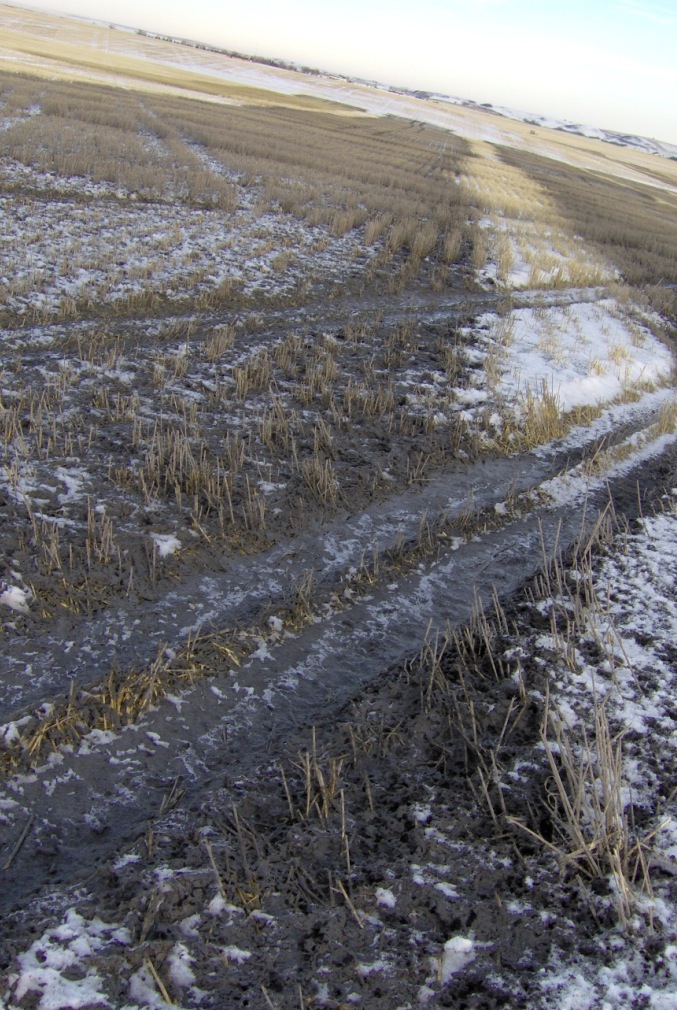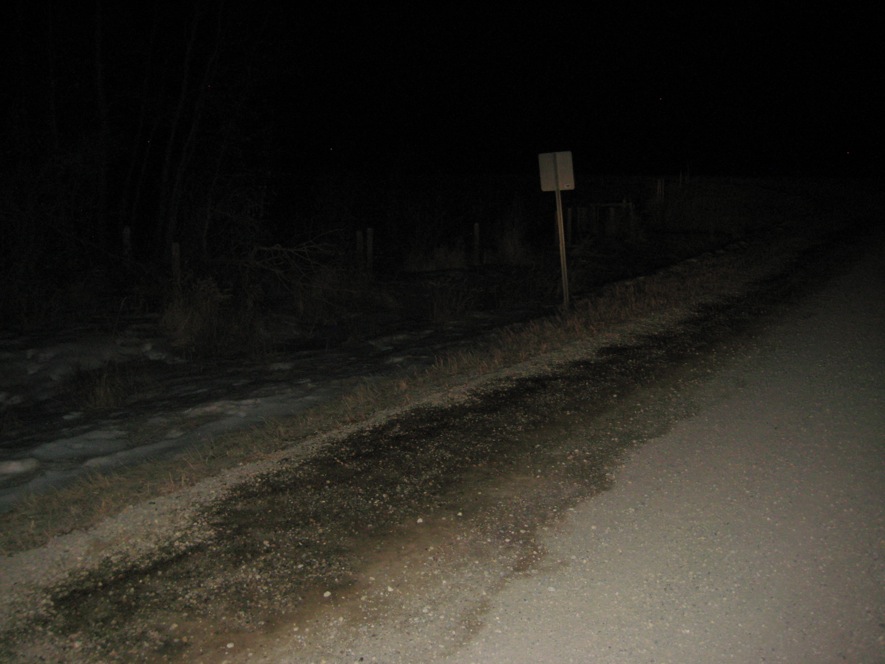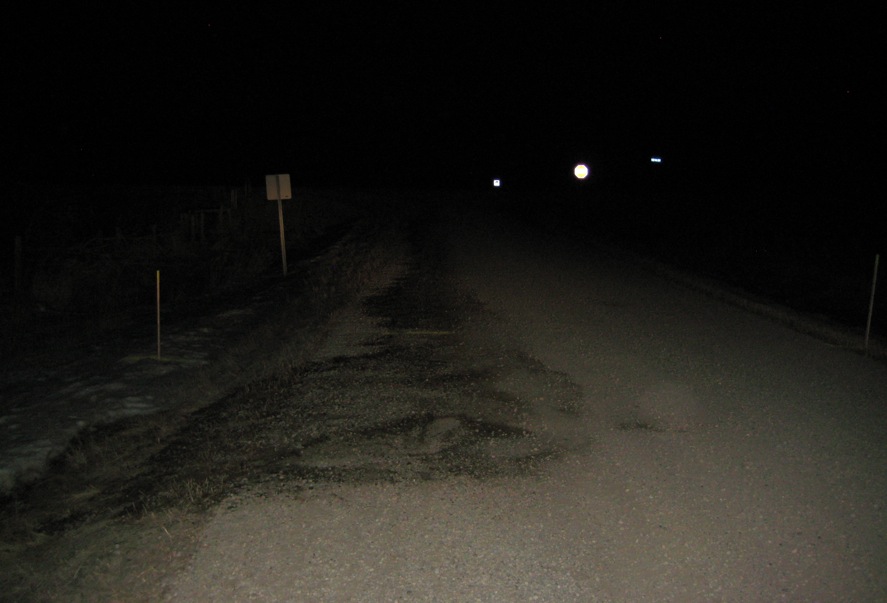
If Encana had notified me, I would never have rescued any dogs. I am horrified to think what my dogs were exposed to, their noses much closer to the waste than mine and their pads directly on it. And what are the harms to wildlife and livestock walking and resting on the waste, eating it? Is drilling waste dumping contributing to the horrific decimation of song birds? What are we eating in livestock raised on this waste and in our bread, cereals, cakes, pastries, pancakes and cookies?
Encana/Ovintiv got rid of its waste on our roads too (under guise of dust suppression) and bribed farmers (for a pittance) to accept the waste dumped on crop and pasture lands, including immediately next to my home, filling it with petroleum stench. I was not given advance warning to enable me to close the windows and avoid being outside.
Canada is a cesspool of toxic corporate rape & pillage pollution, aided by politicians, regulators and courts. We rarely get studies such as these, too many of our academics are frac’d by oil and gas donations, some of the biggest by Encana.



Refer also to:
Other companies dump their waste too, everywhere, even on winter roads and well/facility sites in the muskeg and on paved roads that do not need dust suppression, with “regulators” and frac’d academics nowhere to be seen:


Preliminary Results From New Penn State Study Find Increased Cancer, Health Risks From Road Dumping Conventional Drilling Wastewater, Especially For Children by David E. Hess, Nov 19, 2021, PA Environment Digest Blog

Preliminary results from a new Penn State research study by a team led by Dr. Nathaniel Warner found road dumping of conventional oil and gas drilling wastewater results in increased cancer risks for people living along those roads, especially children.
The study found increased cancer risk from arsenic, lead and nickel in road dust contaminated by wastewater that is above the one in a million risk threshold.
In addition, increased health risks were found to younger populations from the neurotoxins like arsenic, manganese and lead, also found in the wastewater contaminated road dust.
The results of the study were presented by Dr. Warner at the PA League of Women Voters and University of Pittsburgh Graduate School Of Public Health Shale and Public Health Conference on November 17.
This new study adds to the growing body of scientific research showing road dumping of conventional oil and gas wastewater is a threat to human health and the environment. [Read more here.]
The study analyzed road dust samples from roads where spreading of conventional oil and gas drilling wastewater had occurred.
The study looked at the risk this dust presented to an individual living 200 feet away from the road and in their homes.
The study did not look at the more direct risks for someone driving a vehicle or Amish buggy or walking to school on a road contaminated by road spreading of drilling wastewater.
“The particle that we looked at is smaller than 2.5 microns,” said Dr. Warner. “This would get all the way into your lungs, and could potentially get stuck there.”
“We assumed that someone was 200 feet from a roadway, a dirt and gravel roadway, and we broke it up into different age groups,” explained Dr. Warner. “And we assumed the air you’re breathing inside your house has about a quarter of the dust from the outside. Ingestion and inhalation rates are from EPA exposure handbooks.”
[Note: In reality, much more dust would get into rural homes along dirt roads where oil and gas wastewater is spread because it constantly destabilizes the road surface creating more dust than a road without wastewater.
[In addition, a typical house goes through at least three air exchanges a day, if the windows are closed, but in many rural areas windows are open. Read more here.]
The study found–
— Elevated health risks, in particular to younger populations, from the arsenic, manganese and lead neurotoxins in the road dust treated with wastewater;
— The risk for getting cancer from arsenic and nickel where greater than the one in a million standard; and
— The risk for getting cancer from chromium 6 and lead were also greater than one in a million.
“Lead and arsenic that previous studies found accumulated in these roadways, could increase the elevated [health] risk based on the dust exposure,” said Dr. Warner. “There do appear to be thus far cancer risks in excess of that one in a million [standard].”
“When we look at blood lead levels and exposure to lead like we did in this risk assessment in children under 18,” Dr. Warner said. “Of the top 15 [Pennsylvania counties] in terms of those kids under 18 with elevated blood lead levels, five of them are from these north western counties.
“Well, why is that important? Those are the counties that we see a lot of this spreading of oil and gas brines,” said Dr. Warner. “And potentially, the dust associated with those areas could be a potential exposure pathway. More likely it’s from old lead pipes, but we can investigate that.”
“I didn’t present, but we’re working on, what does radium, and radioactivity that was added to the roadway, how does that impact [health risks],” said Dr. Warner. “Those are really known carcinogens, and how does that impact our cancer [risk].”
Dr. Warner said they will be releasing information on the risks associated with radioactive radium contained in the road dust in the near future.
Dr. Warner acknowledged his colleagues Audrey Stallworth from Penn State, Robin Taylor Wilson from Temple University and staff from the Penn State Center For Dirt and Gravel Road Studies for their contributions to the study.
Funding for the study was provided by the National Institutes of Health and Penn State University’s Seed Grant Program.
The study was not funded by the Department of Environmental Protection. [Read more here.]
Click Here for an audio recording of Dr. Warner’s presentation.
A video of the presentation will be posted on the PA League of Women Voters and University of Pittsburgh Graduate School Of Public Health Shale and Public Health Conference webpage in the near future.
Related Articles This Week:
— A First-Hand Account Of How Repeated, Unlimited Road Dumping Of Oil & Gas Drilling Wastewater Is Tearing Apart Dirt Roads And Creating Multiple Environmental Hazards – By Siri Lawson, Farmington Township, Warren County
— New Pitt-Duquesne Study Shows Higher Exposures To Radiation In Road Dumping Of Drilling Wastewater When Appropriate Exposure Scenarios Are Used
— Fair Shake Environmental Legal Services, FracTracker Alliance Call On Citizens To Report Road Dumping Of Oil & Gas Drilling Wastewater
— Trout Unlimited: What Do Pennsylvania’s Dirt And Gravel Roads Have To Do With Trout?
— Marcellus Shale Coalition Challenges EQB Authority To Increase Bond Amounts For Conventional Oil & Gas Wells; Majority Of 100,508 Conventional Wells Not Required To Have Any Bonds
Related Article Last Week:
— Bay Journal: Dirt Roads & Drilling Wastewater – Dustup Rises Over Health Issues
Related Articles:
— Op-Ed: Will Our Dirt Roads Again Be Used As Dumping Sites For Oil & Gas Well Wastewater
— Op-Ed: The Story Behind Stopping Conventional Oil & Gas Brine Spreading On Dirt Roads
